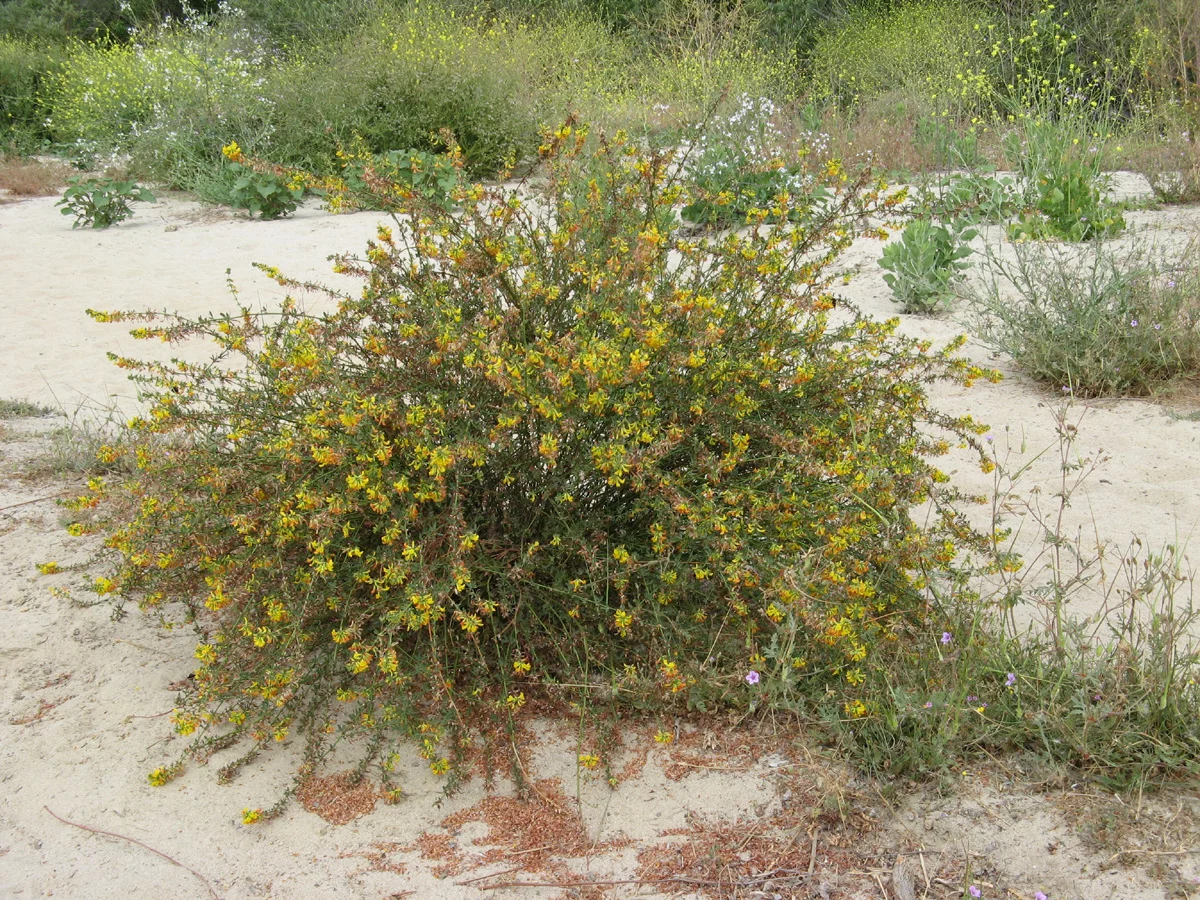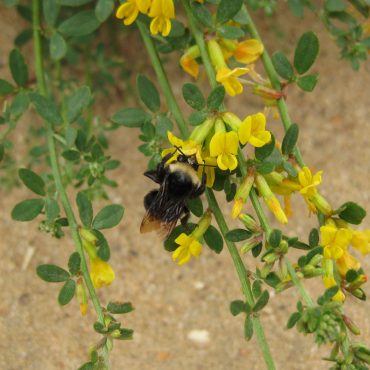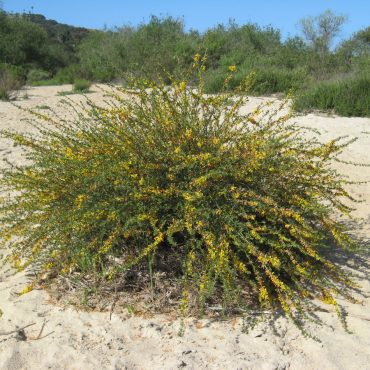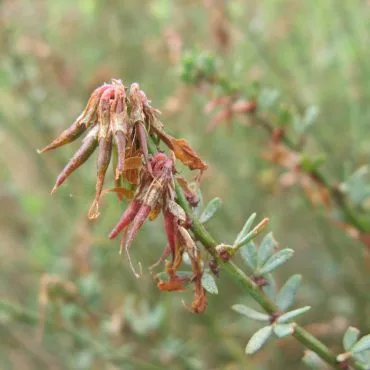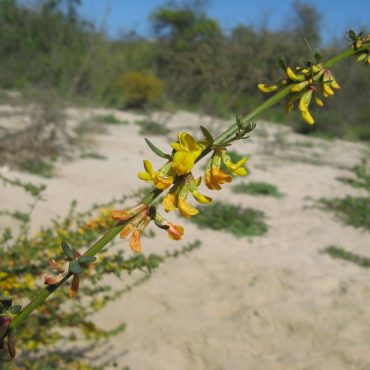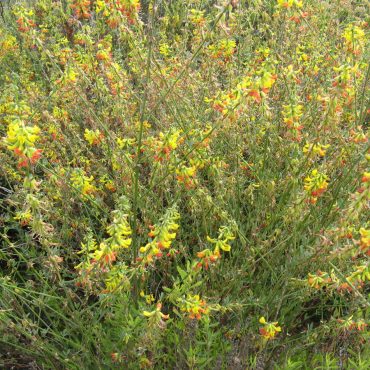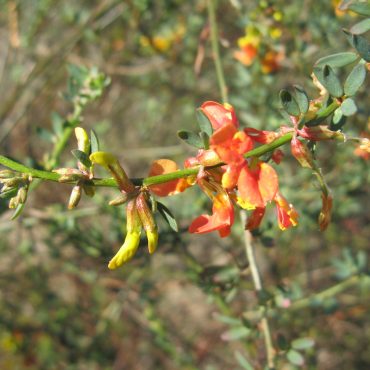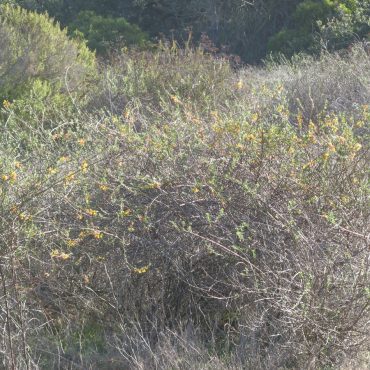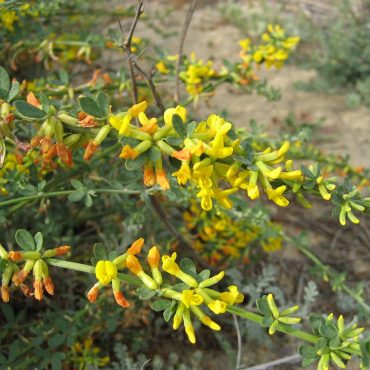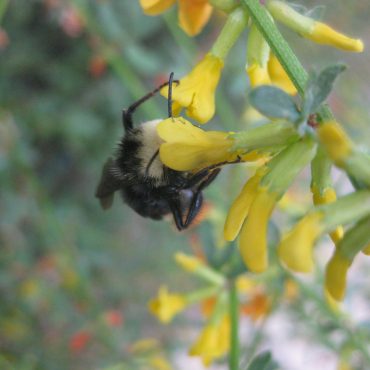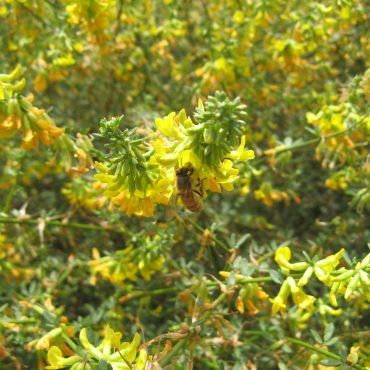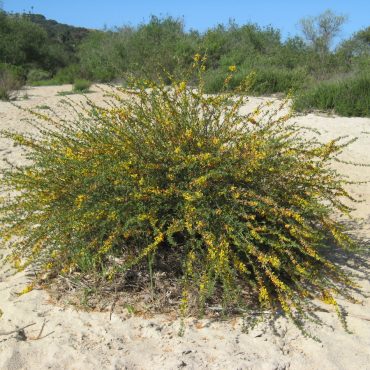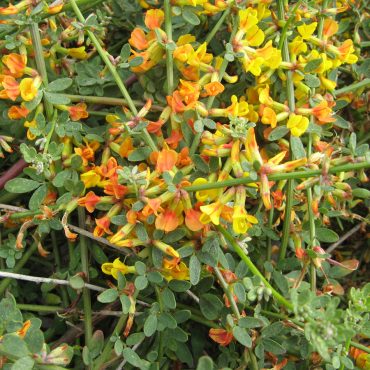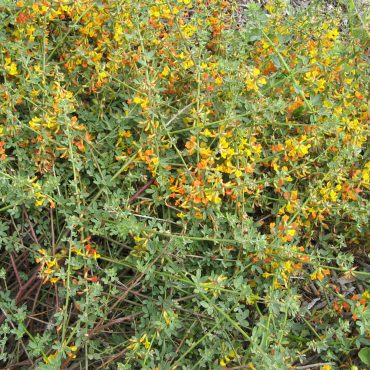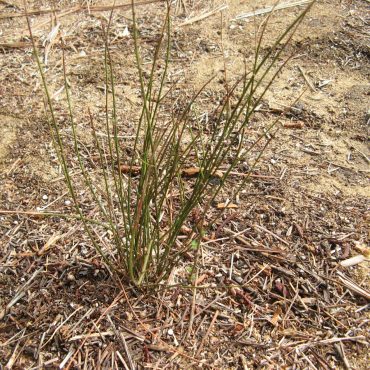Deerweed is a shrubby perennial with wiry, green branches arising from near the base of the plant. When not crowded, the plant assumes a hemispherical shape, usually less than three feet (1 m) high. Deerweed is drought deciduous, but the stems contain chlorophyll allowing the plant to continue to photosynthesize and grow.35
The hairless or sparsely-haired leaves usually consist of three oval leaflets, 1/4-3/8 inch (6-15 mm) long; when more than three, leaflet arrangement is pinnate. Leaves may be shed during the dry summer.
Deerweed flowers are 1/4-3/8 inch (7-12mm) long, yellow, aging to orange. They have the bilateral shape of a typical pea flower. The upper petal is large and flares upward forming the “banner”. Two side petals (“wings”) are directed forward, enclosing or concealing the remaining two petals which are fused lengthwise into a “keel”. In turn, the keel encloses the male and female reproductive structures. Flowers are bisexual. There are ten stamens, nine united and one free, and a single pistil.4,26 Clusters of two to seven flowers attach directly to stem at a single point, and many clusters along the stem open about the same time. The main bloom period is March-July, but some flowers may be found throughout the year.1
Fruit is a two-seeded pod 5/8 inch (1-1.5 cm) long, somewhat curved upward and tapering to a long beak. Seeds are an important food for many birds and small animals.11

